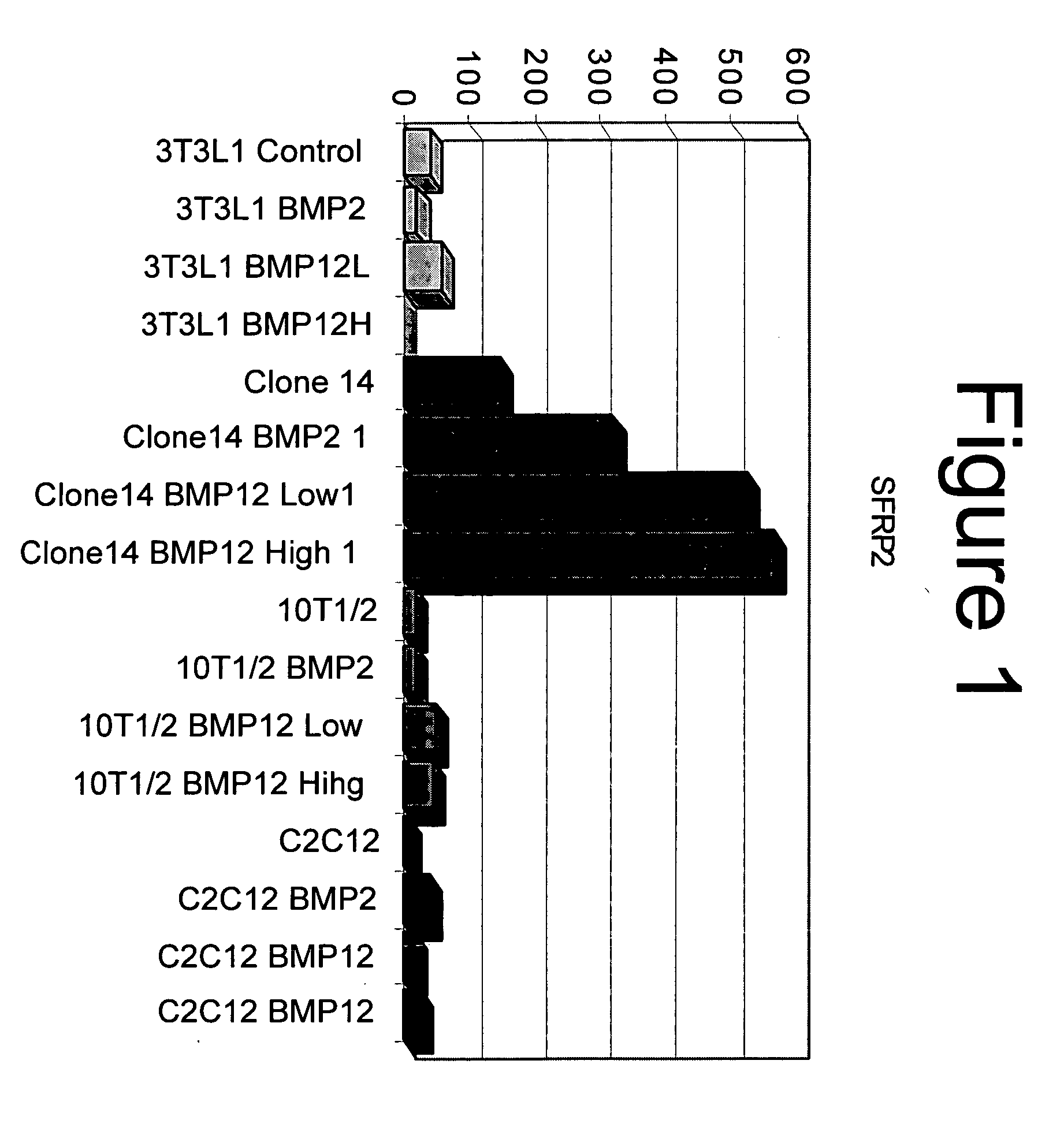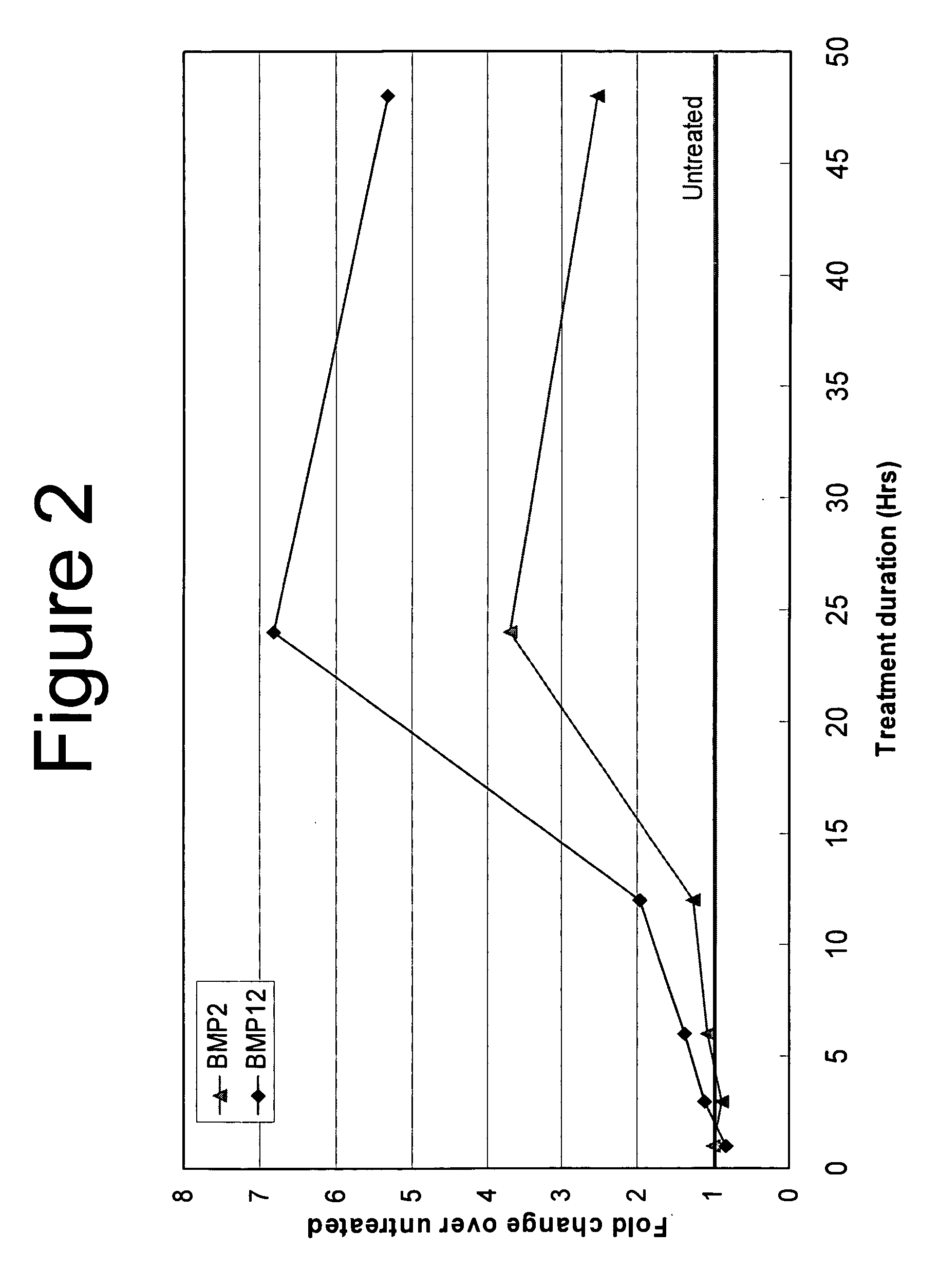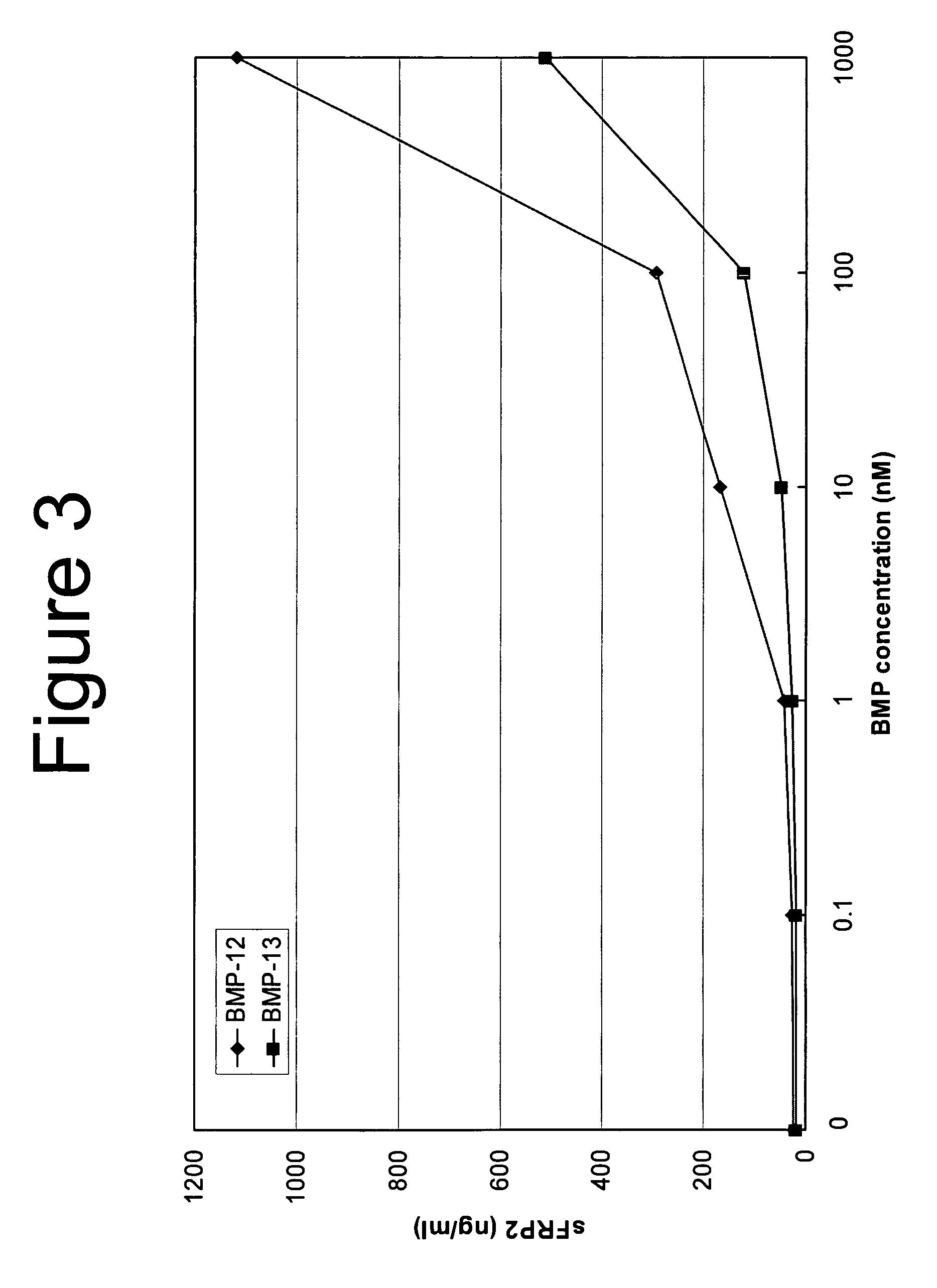Use of sFRPs as markers of BMP activity
- Summary
- Abstract
- Description
- Claims
- Application Information
AI Technical Summary
Benefits of technology
Problems solved by technology
Method used
Image
Examples
example 1
Microarray Analysis
[0087] Four different mouse cell lines (myoblastic precursor cells (C2C12 cells, ATCC), pre-adipocyte cells (3T3L1 cells, ATCC), embryonic fibroblasts (C3H10T1 / 2, ATCC), and immortalized endochondral skeletal progenitor cells derived from mouse limb bud (clone14)) were cultured in Dulbecco's-modified Eagle's medium (DMEM) supplemented with 10% fetal bovine serum (FBS) for two days at 2000 cells / cm2. The medium was changed to. DMEM+1% FBS supplemented with either 10 nM rhBMP-12, 100 nM rhBMP-12, or no protein. Cells from each group were lysed 24 hours after the start of the BMP treatment. Total RNA was extracted RNEASY® Micro Kit (QIAGEN®). Nucleic acid concentration was determined with a spectrophotometer.
A. Array Hybridization
[0088] Double stranded DNA was synthesized from 5 μg total RNA using the SUPERSCRIPT® System (INVITROGEN®). The cDNA was purified and transcribed in vitro using T7 RNA polymerase. Biotinylated cRNA was generated using biotin labeled UTP ...
example 2
Measurement of RNA Levels
[0102] Immortalized endochondral skeletal progenitor cells derived from mouse limb bud (clone14 cells) were plated at 2000 cells / cm2 in 6-well culture dishes. The cells were grown from three days in DMEM+10% FBS. The medium was changed to DMEM+1% FBS supplemented with either 10 nM rhBMP-2, 10 nM rhBMP-12, or no protein. Cells from each group were lysed at 1, 3, 6, 12, 24, and 48 hours after the start of the BMP treatment. Total RNA was extracted and the nucleic acid concentration was determined as described above. Real-time RT-PCR was performed on 100 ng of RNA from each sample in using TAQMAN®. Universal PCR Master Mix. The levels of expression of sFPR-2 RNA and the control gene GAPDH RNA were determined using TAQMAN® Gene Expression Arrays from Applied Biosystems. The cycle threshold method was used to normalize sFRP2 expression to GAPDH, then to compare sFRP2 levels in BMP treated cells to levels in untreated cells. The increase in sFRP2 RNA expression i...
example 3
Measurement of Protein Levels
[0103] Clone14 cells were plated at 2000 cells / cm2 in 12-well culture dishes. The cells were grown for four days in DMEM with 10% FBS. The medium was changes to DMEM / Ham's F12 supplemented with 0.1% BSA and either rhBMP-12 or rhBMP-13 at doses of 0, 10, 100, or 1000 nM. After 48 hours, the cell supernatants were collected. The quantity of sFRP2 protein in the supernatant was evaluated using a sandwich ELISA assay.
[0104] To produce antibodies for the ELISA assay, polyclonal antibodies to human sFRP2 were raised in rabbits and chickens, then affinity-purified using a group of pooled peptides unique to the sFRP2 protein. Titer plates were coated with rabbit anti-sFRP2 capture antibody in phosphate-buffered saline (PBS) overnight at 4° C. After blocking for 1 hour with 2% BSA, the experimental samples were incubated in the titer plates at room temperature for two hours. After washing, a chicken anti-sFRP2 detecting antibody was added to the samples and the...
PUM
| Property | Measurement | Unit |
|---|---|---|
| Gene expression profile | aaaaa | aaaaa |
| Level | aaaaa | aaaaa |
Abstract
Description
Claims
Application Information
 Login to View More
Login to View More - R&D
- Intellectual Property
- Life Sciences
- Materials
- Tech Scout
- Unparalleled Data Quality
- Higher Quality Content
- 60% Fewer Hallucinations
Browse by: Latest US Patents, China's latest patents, Technical Efficacy Thesaurus, Application Domain, Technology Topic, Popular Technical Reports.
© 2025 PatSnap. All rights reserved.Legal|Privacy policy|Modern Slavery Act Transparency Statement|Sitemap|About US| Contact US: help@patsnap.com



